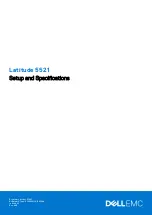
Direct Tunnel
▀ Direct Tunnel Configuration
▄ Cisco ASR 5x00 Packet Data Network Gateway Administration Guide
252
An APN profile must have been previously created, configured, and associated with a previously created,
configured, and valid operator policy. For information about operator policy creation/configuration, refer to the
Operator Policy
chapter in this guide.
Direct tunnel is now allowed for the APN but will only setup if also allowed on the RNC.
Enabling Direct Tunnel per IMEI
Some operator policy filtering of calls is done on the basis of international mobile equipment identity (IMEI) so the
direct tunnel setup may rely upon the feature configuration in the IMEI profile.
The IMEI profile basis its permissions for direct tunnel on the RNC configuration associated with the IuPS service.
By default, direct tunnel functionality is
enabled
for all RNCs.
Example Configuration
The following is an example of the commands used to enable direct tunneling in the IMEI profile:
config
imei-profile
<profile_name>
direct-tunnel check-iups-service
end
Notes:
An IMEI profile must have been previously created, configured, and associated with a previously created,
configured, and valid operator policy. For information about operator policy creation/configuration, refer to the
Operator Policy
chapter in this guide.
Direct tunnel is now allowed for calls within the IMEI range associated with the IMEI profile but a direct tunnel
will only setup if also allowed on the RNC.
Enabling Direct Tunnel to Specific RNCs
SGSN access to radio access controllers (RNCs) is configured in the IuPS service.
Each IuPS service can include multiple RNC configurations that determine communications and features depending on
the RNC.
By default, direct tunnel functionality is
enabled
for all RNCs.
Example Configuration
The following is an example of the commands used to ensure that restrictive configuration is removed and direct tunnel
for the RNC is enabled:
config
context
<ctx_name>
iups-service
<service_name>
rnc id
<rnc_id>
















































